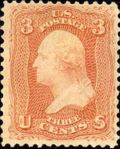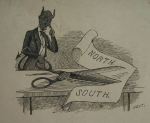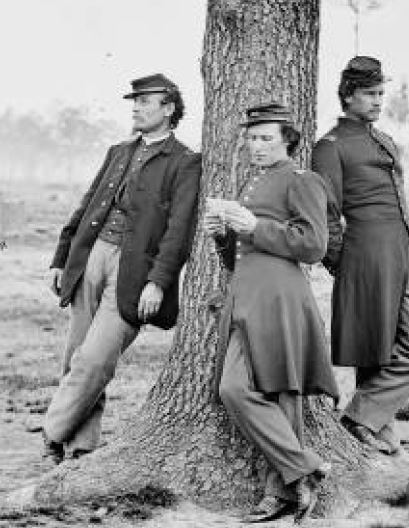
During wartime communicating with loved ones becomes an overwhelming concern. In the Civil War period many soldiers and families wrote letters to each other almost daily. Postage was cheap by our standards 3 cents per half ounce which was lowered to 2 cents in October of 1863. But for people who earned an average salary of $20 a month or about 90 cents a day and for soldiers earning $15 a month the price was  high. Because stamps became a wadded mess in soldier’s pockets, in 1863 the post office allowed soldiers to write “Soldier’s Mail” on the envelope. But that didn’t mean it traveled free. The recipient would have to pay the postage when the letter arrived.
high. Because stamps became a wadded mess in soldier’s pockets, in 1863 the post office allowed soldiers to write “Soldier’s Mail” on the envelope. But that didn’t mean it traveled free. The recipient would have to pay the postage when the letter arrived.
Those letters were delivered at first to postal boxes in post offices. But in 1863 free city delivery was initiated in 49 major cities. However, rural delivery did not start until the 1890s.
Today we rarely post a letter or bill that is not securely hidden inside an envelope. Pre-1830 those with the time could make handmade envelopes for invitations and novelty items or make do with the messy procedure of folding the letter and sealing it with wax. When postage in the US was lowered in the 1840s, small hand crafted envelope businesses began to develop. Twenty-five sheets of paper were stacked up, a stencil placed on top, and then the envelopes were cut out with a pocket knife. These were then folded and glued by hand. The open edge was left unglued to be sealed with sealing wax. According to Maynard Benjamin in The History of Envelopes by 1855 the New York City manufactory of West and Berlin employed 100 hand folders who made 200,000 envelopes a day using this method. (p. 5)
In the 1850s a drop in postage rates and an increase in letter sending made the time ripe for mechanization. By the mid 1850s several automatic cutting and folding machines were available in Europe. In the United State, Russell Hawes was granted the patent on an envelope folding machine in 1853 and Doctor Hawke added a self-feeder. One machine could fold about 10,000 envelopes a day. Berlin and Jones (formerly West and Berlin) started using such machines in 1857, relegating handmade envelopes to geometry lessons, and making the convenience and privacy of envelopes widely available.
To market envelopes, manufacturers such as Berlin and Jones added engraved illustrations and sometimes preprinted postage. For example, in  the 1850s abolitionists favored envelopes that addressed the evils of slavery and served to notify recipients of the sender’s stance on the issue rather like the way we paste charity stickers on ours.
the 1850s abolitionists favored envelopes that addressed the evils of slavery and served to notify recipients of the sender’s stance on the issue rather like the way we paste charity stickers on ours.
After the Civil War started both Northern and  Southern envelope manufacturers produced patriotic designs reflecting wartime sentiments as well as outright propaganda. However, as the war dragged on, the southern postal system broke down, and people in the north found the decorated envelopes too flamboyant for
Southern envelope manufacturers produced patriotic designs reflecting wartime sentiments as well as outright propaganda. However, as the war dragged on, the southern postal system broke down, and people in the north found the decorated envelopes too flamboyant for the hard times and usage dropped. A remnant of the practice continues today, in the tradition of decorating envelopes with patriotic designs on commemorative covers issued by the U.S. Postal Service.
the hard times and usage dropped. A remnant of the practice continues today, in the tradition of decorating envelopes with patriotic designs on commemorative covers issued by the U.S. Postal Service.
There are many excellent collections of Civil war era envelopes available on the web. Here are few to explore:
*Make your own envelope using the diamond pattern favored in the 1800s


Leave a comment